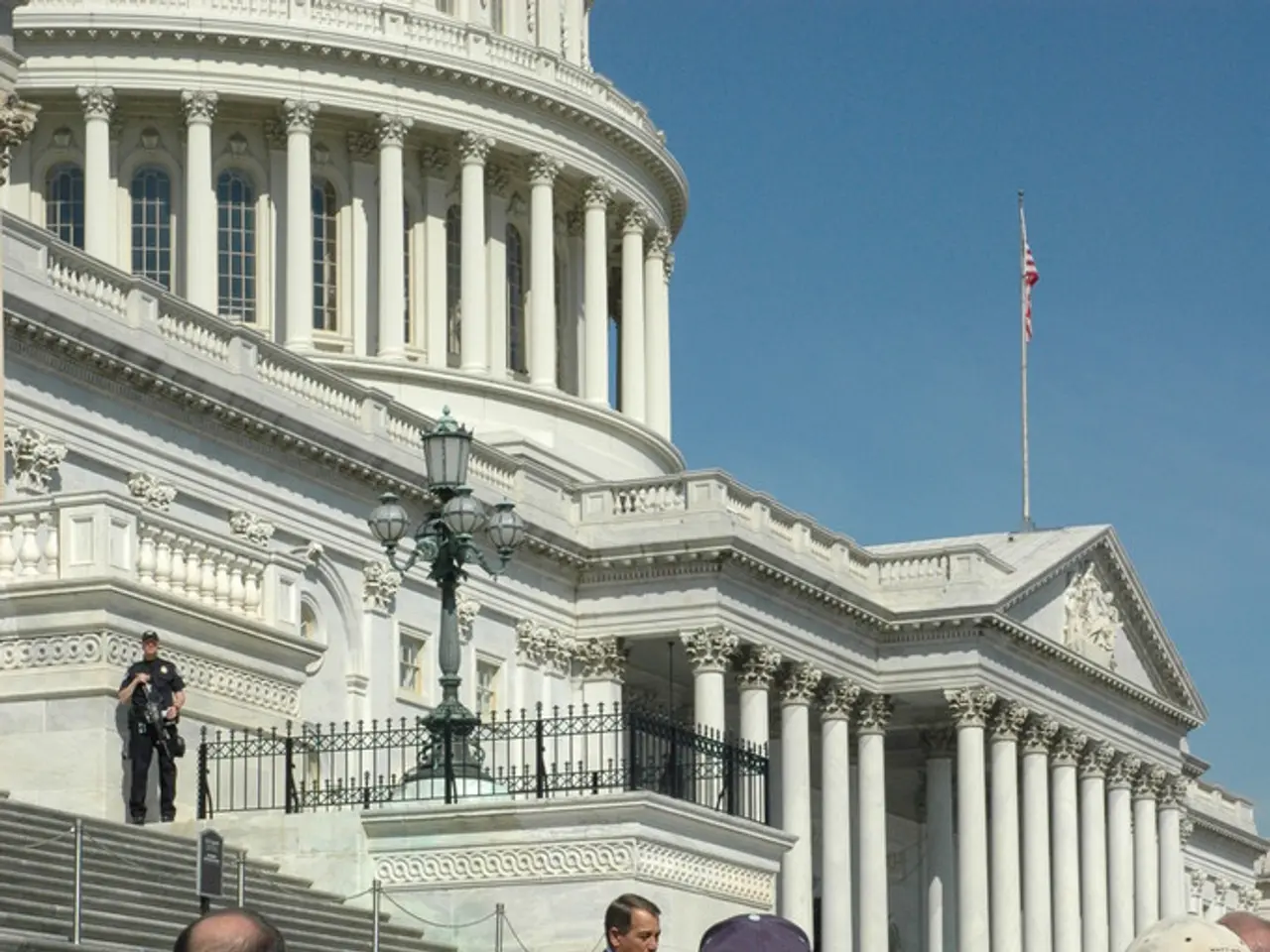Information from the National Center for Education Statistics
In the ever-evolving world of education, the National Center for Education Statistics (NCES) plays a pivotal role in gathering and analysing data to provide valuable insights into the US education system.
Recent key findings and trends reveal a significant decline in public school enrollment since the COVID-19 pandemic, with approximately 1.28 million students lost between the 2020 and 2024 academic years. This reflects a 2.5% drop in total enrollment, a trend projected to persist through at least 2031, reaching nearly 4% nationally [1][3][5].
This shrinking enrollment is primarily driven by sustained lower birth rates and demographic shifts such as an aging population. Rural states in the Northeast and Midwest are disproportionately impacted by these trends. Additionally, changes in schooling preferences—such as increased attendance in private schools, charter schools, homeschooling, and microschools—are fragmenting the traditional public school student population, complicating assessment and accountability systems [3].
Beyond enrollment numbers, NCES data highlights broader trends in education. For instance, the NCES Condition of Education report measures around 42 indicators on the status and progress of education, including school crime, safety, and student achievement, providing a comprehensive overview of education conditions [2].
Other notable trends documented by NCES include an increased percentage of public schools requiring uniforms, rising from about 12% in 1999-2000 to nearly 22% in 2015-16 [4].
As the education landscape continues to evolve, it's essential to foster a supportive environment that encourages inventiveness and curiosity amongst learners. By studying trends and student outcomes, policymakers can create targeted interventions for students who struggle, stressing critical thinking abilities, and personalising learning methods to each student's needs [6].
Continuous professional development programs for educators help update their teaching methods, combine new technologies effectively, and equip them with modern pedagogical approaches. Researchers use data from NCES to answer education-related questions, forming the base of their studies [7].
Policymakers and educators can use data to inform decisions and cause change in the education system. For example, educational institutions can use predictive modeling and historical data to anticipate issues like high dropout rates or low achievement. Allowing interdisciplinary approaches permits students to explore different topics and develop an extensive comprehension of the world [8].
Moreover, integrating technology in classrooms improves access to information, creates interactive learning experiences, and prepares students for digital-age demands. Linking classroom material to real-world scenarios helps students understand abstract concepts better and see the practical relevance of their learning [9].
In coastal towns hit by disasters, data-based decision-making was used to prioritize school safety and ensure children could access quality learning. Executing student-centered assessments that focus on measuring growth rather than just grades stimulates intrinsic motivation and long-term learning [10].
Lastly, it's crucial to encourage collaboration in group projects and activities to develop teamwork, problem-solving, and communication skills. Proper citation and acknowledgment of NCES data sources are usually required for academic and research purposes [11].
NCES aims to make their findings public, so parents, students, and other stakeholders can make wise choices about their education. By doing so, we can ensure that our education system adapts to the changing needs of our society and prepares our students for a successful future.
References: [1] National Center for Education Statistics. (2022). Digest of Education Statistics. Retrieved from https://nces.ed.gov/programs/digest/ [2] National Center for Education Statistics. (2022). Condition of Education. Retrieved from https://nces.ed.gov/programs/coe/ [3] National Center for Education Statistics. (2022). Projections of Education Statistics to 2031. Retrieved from https://nces.ed.gov/programs/projections/ [4] National Center for Education Statistics. (2018). Public School Uniform Policies in the United States: School Year 2015-16. Retrieved from https://nces.ed.gov/pubs2018/2018017.pdf [5] National Center for Education Statistics. (2022). Common Core of Data (CCD). Retrieved from https://nces.ed.gov/ccd/ [6] Carnegie Foundation for the Advancement of Teaching. (2016). Educator's Guide to Personalized Learning. Retrieved from https://www.carnegiefoundation.org/resources/educators-guide-to-personalized-learning/ [7] National Center for Education Statistics. (2022). Data Tools. Retrieved from https://nces.ed.gov/data/ [8] Partnership for 21st Century Skills. (2015). Framework for 21st Century Learning. Retrieved from https://www.p21.org/our-work/framework/ [9] Partnership for 21st Century Skills. (2015). The Four C's of 21st Century Learning. Retrieved from https://www.p21.org/our-work/4cs/ [10] Digital Promise. (2020). Student-Centered Learning. Retrieved from https://digitalpromise.org/our-work/student-centered-learning/ [11] National Center for Education Statistics. (2022). Citing NCES Data. Retrieved from https://nces.ed.gov/nationsreportcard/about/citing.asp
- The media frequently reports on the data published by the National Center for Education Statistics (NCES), providing insights into the changing trends in the US education system.
- Through robust surveys and polling, NCES collects data on various aspects of the education system, including behavior, trends, and policies and legislation.
- By analyzing the statistics gathered by the NCES, researchers can gain a better understanding of student outcomes, informing their work in education analytics.
- The NCES also provides insights into general news topics related to education, such as the decline in public school enrollment due to the COVID-19 pandemic.
- Podcasts covering education often invite experts to discuss the latest findings from the NCES, shedding light on important issues like demographic shifts in school enrollment.
- As students make choices about their education, having access to data from public sources like the NCES is crucial to understanding the consequences of these decisions for their personal and academic growth.
- Educators can utilize the data provided by the NCES to adapt their teaching methods and create customized learning experiences for their students, enhancing their understanding of abstract concepts.
- Policymakers can leverage the insights gained from NCES data to devise targeted interventions for struggling students and develop effective strategies for addressing critical issues in the education system.
- By encouraging collaboration in group projects and activities, educators can help students develop essential skills such as teamwork, problem-solving, and communication, preparing them for success in a variety of environments.








